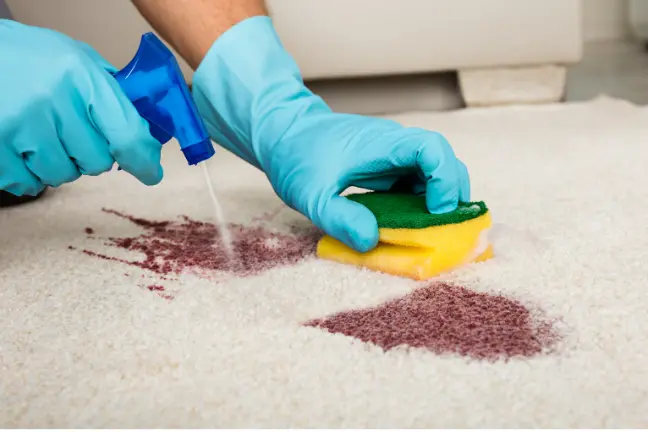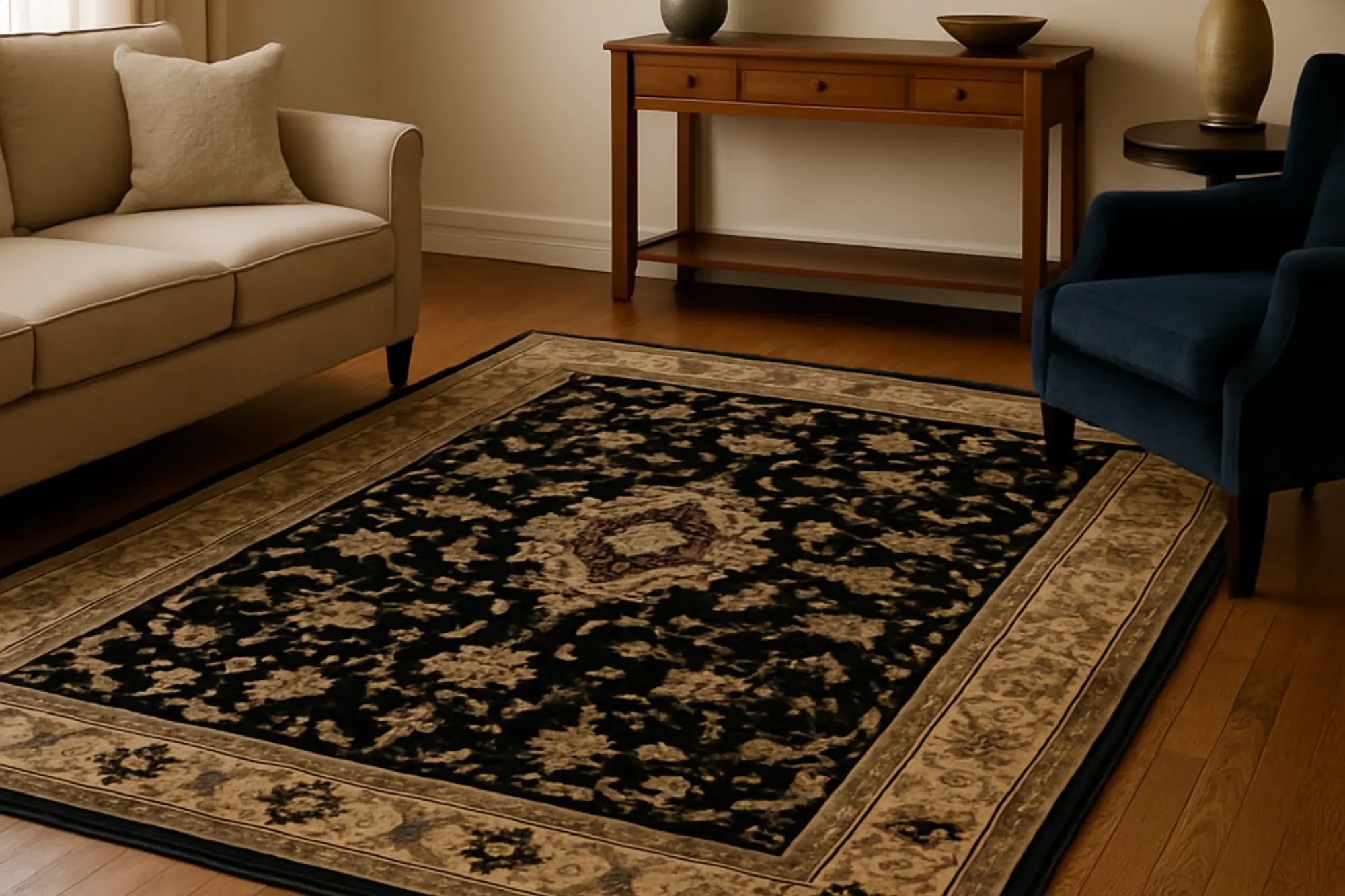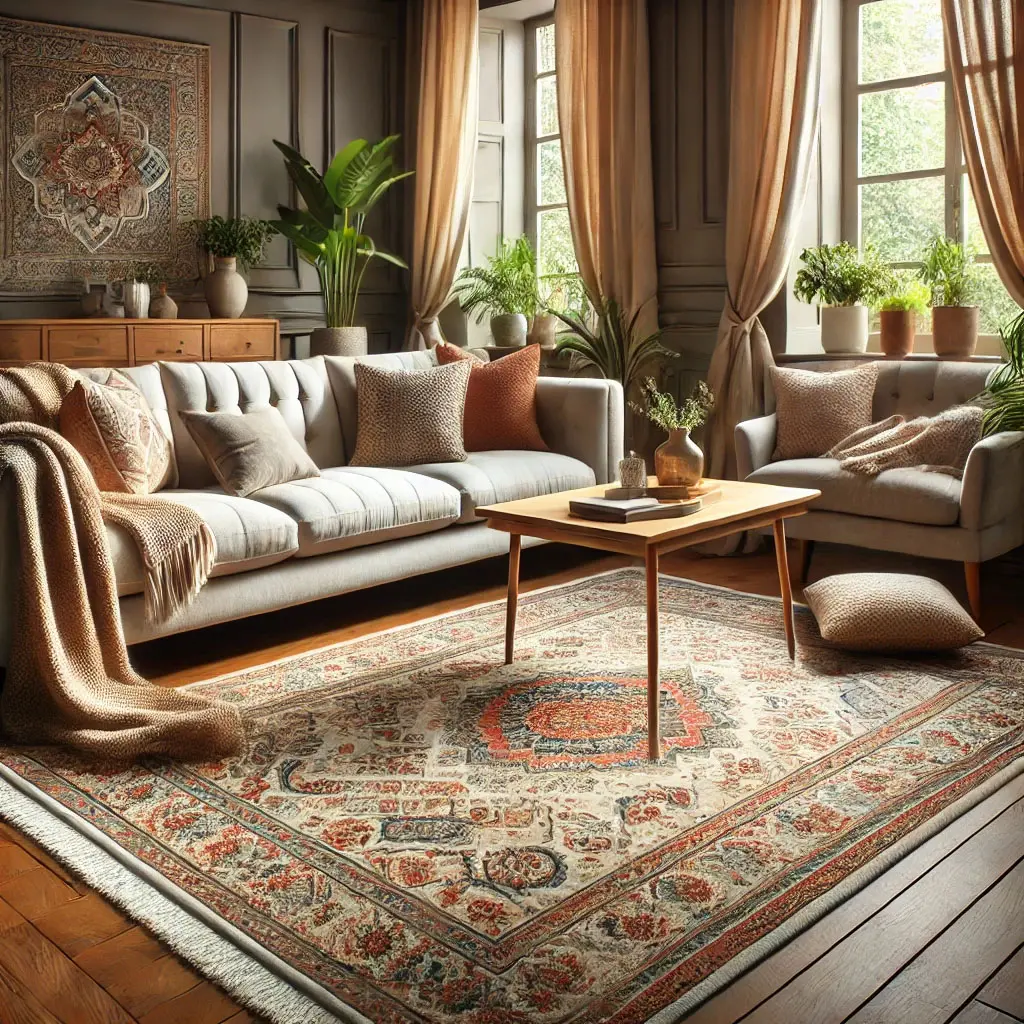The Psychology of Colors in Rugs: What Your Choices Say About You
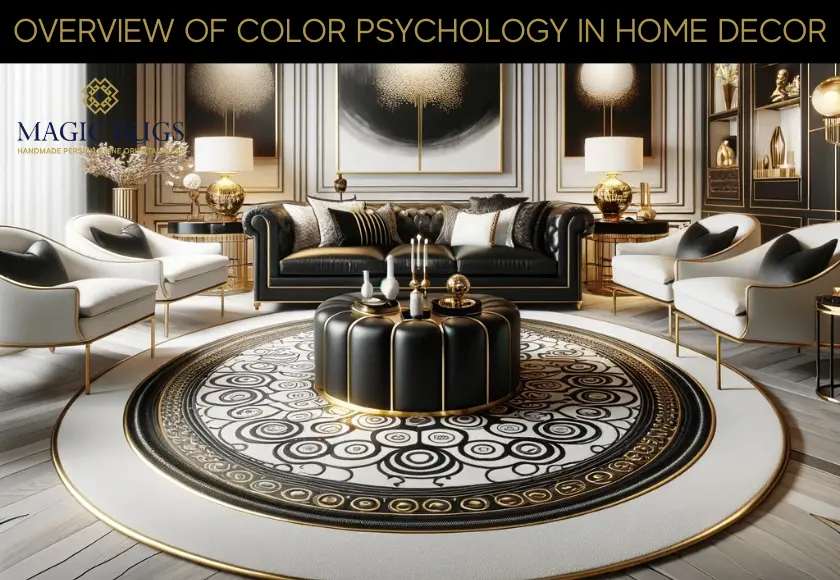
Overview of Color Psychology in Home Decor
Welcome to the intriguing world of color psychology in home decor, a realm where hues speak louder than words. In this space, every shade and tone carries its unique narrative, subtly influencing our mood, emotions, and perceptions. The colors we choose for our homes, particularly in elements as prominent as rugs, are not just a matter of aesthetic preference; they reflect our personalities and inner worlds.
The concept of color psychology delves into how different colors affect human behavior and emotional well-being. It's a fascinating intersection of art, design, and psychology that reveals much about our choices and preferences. For instance, a bright red rug might energize and invigorate a space, reflecting a bold and passionate personality, while a blue rug could create a serene and calming atmosphere, mirroring a desire for tranquility and stability.
As we explore the psychology of colors in rugs, we embark on a journey to understand how these choices shape our living spaces and, in turn, how they can reflect and affect our personal lives. From the vibrant hues that command attention to the subtle tones that soothe and comfort, every color has a story, and understanding this narrative can enrich the way we approach interior design and personal expression.
In this blog, we'll uncover the layers of meaning behind different rug colors, what they say about us, and how to harness their power to create spaces that resonate with our true selves. Get ready to look at your rugs in a whole new light, as not just decor elements, but as reflections of your personality and emotional landscape.
Understanding Color Psychology
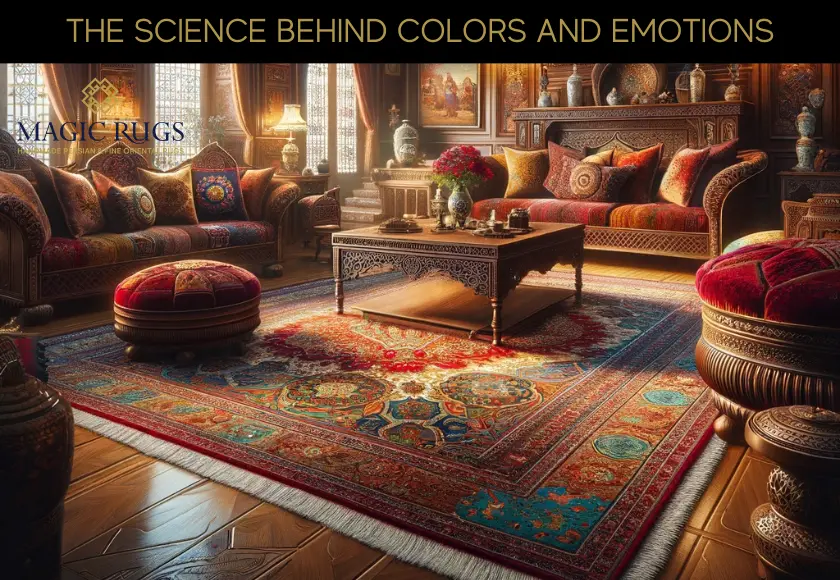
The Science Behind Colors and Emotions
Color psychology is an area of study that examines the impact of color on human behavior and emotions. Scientifically, it's understood that colors can influence our mental and emotional states. This connection between color and emotion stems from psychological responses that are often universal, though they can be influenced by cultural and personal experiences.
For instance, warm colors like red, orange, and yellow are often associated with feelings of warmth, excitement, and optimism. On the other hand, cool colors like blue, green, and purple tend to evoke calmness, serenity, and sometimes sadness. The way these colors impact us is partly due to their associations in nature (like blue with sky and water, green with trees and grass) and partly due to societal associations (like red with stop signs and danger, yellow with sunshine and happiness).
Color | Emotional Response | Example in Decor |
Red | Energy, Passion | Stimulating, dynamic rugs in living areas |
Orange | Enthusiasm, Fun | Welcoming, vibrant rugs in playrooms |
Yellow | Happiness, Cheer | Bright, uplifting rugs in kitchens |
Green | Calmness, Balance | Soothing, natural rugs in bedrooms |
Blue | Serenity, Trust | Relaxing, tranquil rugs in bathrooms |
Purple | Luxury, Creativity | Elegant, imaginative rugs in home offices |
How Colors Affect Mood and Behavior
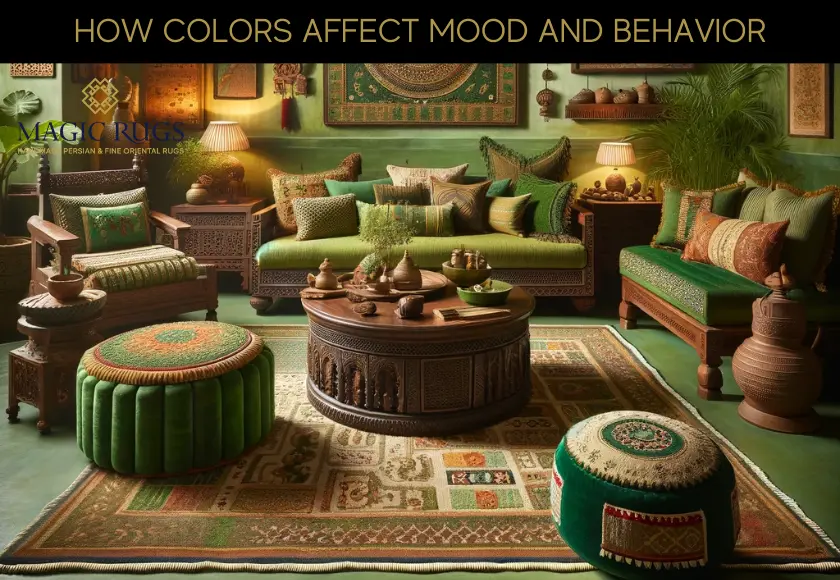
Colors don't just influence how we feel; they also have the power to shape our behaviors. For example, blue, known for its calming effects, can create a sense of tranquility in a space, encouraging relaxation and contemplation. On the contrary, red can increase energy levels and even stimulate appetite, making it a popular choice in dining areas and restaurants.
In home decor, understanding the psychological impact of colors can be particularly useful when choosing rugs, as they are significant visual elements in any space. A carefully selected rug color can set the tone for the entire room, influencing the mood and behavior of its occupants. For instance, a green rug in a home office can promote balance and focus, while a purple rug in a creative space can inspire imagination and depth of thought.
By integrating the principles of color psychology into home decor, we can create spaces that not only look beautiful but also cater to our emotional and psychological needs. This understanding enables us to choose rug colors that harmonize with our desired mood and atmosphere in various home settings.
Rug Colors and Personality
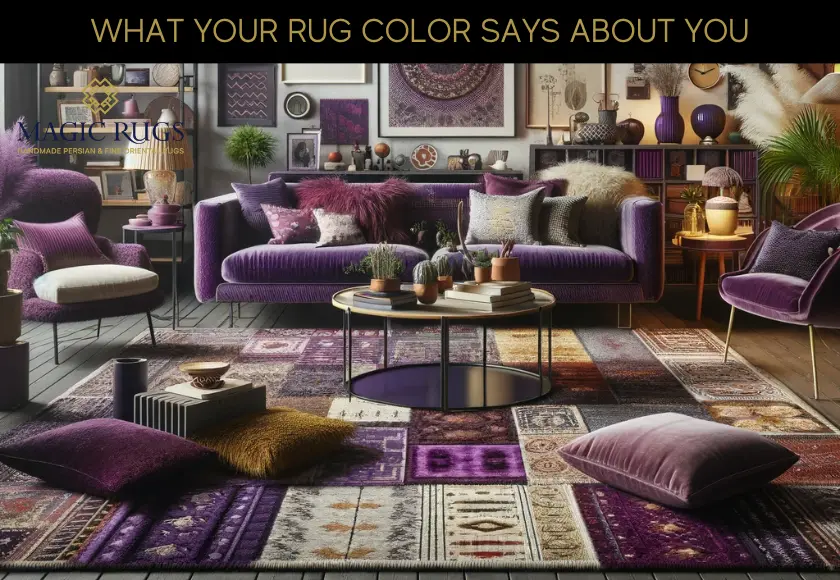
What Your Rug Color Says About You
The color of your rug can be a subtle yet profound indicator of your personality. Just as art and fashion choices reflect personal styles and preferences, the colors we select for our home decor, especially rugs which are a focal point in many rooms, can provide insights into our character traits and dispositions.
- Bold Reds and Oranges: Choosing a rug in vibrant reds or oranges suggests a dynamic, energetic personality. People drawn to these colors are often outgoing, adventurous, and thrive on excitement and stimulation.
- Sunny Yellows: If you're inclined towards a yellow rug, it might indicate an optimistic, cheerful disposition. Yellow lovers are often seen as approachable, friendly, and generally have a positive outlook on life.
- Earthy Greens and Browns: Preference for green or brown rugs reveals a connection to nature and a love for stability and balance. These individuals are often grounded, reliable, and appreciate tranquility and security.
- Calming Blues: A penchant for blue rugs indicates a preference for peace and serenity. People who choose blue are often perceived as trustworthy, calm, and tend to value stability and introspection.
- Regal Purples: If purple is your choice, it may reflect creativity, luxury, and a taste for the extraordinary. Lovers of purple often have a unique perspective on life and value individuality and artistic expression.
Personality Traits Linked to Color Preferences
- Extraversion: Bright and bold colors like red and orange are often preferred by extroverts who enjoy standing out and making strong impressions.
- Agreeableness: Softer hues like light blue or gentle green are typically chosen by agreeable personalities who value harmony and are often nurturing and supportive.
- Openness: Individuals with high levels of openness might gravitate towards unusual or complex color patterns in rugs, reflecting their appreciation for diverse experiences and ideas.
- Stability: Earth tones such as browns and dark greens can be indicative of a stable, grounded personality, often linked to conscientious individuals.
- Creativity: Vibrant and unconventional colors, like purples or multi-colored patterns, can be a sign of creativity and a preference for novelty and innovation.
Understanding these associations between rug colors and personality traits can be a fun and insightful way to reflect on your personal style and how it manifests in your home decor choices. It's important to note, however, that these are general tendencies and not definitive rules. Personal preferences can be influenced by a variety of factors, including cultural background, past experiences, and individual tastes.
The Impact of Different Colors
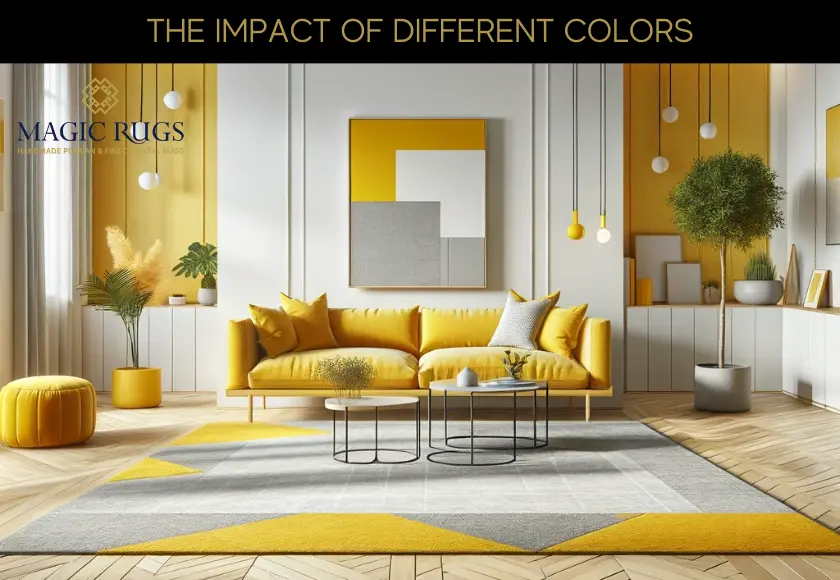
Warm Colors: Reds, Oranges, Yellows
Warm colors in rugs often infuse a room with a sense of energy and vibrancy. These hues are reminiscent of things like fire and sunlight, bringing feelings of warmth and comfort.
- Reds are powerful and assertive, creating a sense of luxury and drama. A red rug can make a bold statement and is often used to stimulate conversation in a living room or dining area.
- Oranges combine the energy of red and the happiness of yellow, often resulting in a welcoming and enthusiastic atmosphere. An orange rug can introduce a playful, sociable vibe to a space.
- Yellows are bright and cheerful, associated with joy and sunshine. A yellow rug can brighten up a space, encouraging a sense of optimism and openness in rooms like kitchens and bathrooms.
Cool Colors: Blues, Greens, Purples
Cool colors have a calming effect and are typically chosen for rooms where relaxation is key.
- Blues are soothing and serene, often used to promote tranquility and peace. A blue rug is a popular choice for bedrooms and bathrooms, where it can help to create a spa-like retreat.
- Greens symbolize nature and are the easiest color on the eye, often used to reduce stress. A green rug can help to balance a room, making it a fitting choice for home offices and libraries.
- Purples have long been associated with royalty and luxury. Lighter shades like lavender can be calming, while deeper purples can be quite dramatic. A purple rug can add a touch of sophistication and comfort to a space.
Neutral Colors: Whites, Greys, Tans
Neutral colors offer versatility and can help to ground a room's decor.
- Whites can make a room feel more spacious and can provide a backdrop that makes other colors pop. A white rug can introduce a sense of cleanliness and purity to a space.
- Greys are timeless and can convey a sense of formality or modernity. A grey rug can be the perfect complement to a contemporary room, adding sophistication without overpowering with color.
- Tans and beiges are warm neutral colors that can bring a sense of warmth and stability. They're perfect for those who prefer a more understated, natural look, and work well in almost any room.
Each color family brings its unique atmosphere to a room, and understanding the impact of these colors can help in making informed decisions when selecting a rug for your home.
Color Trends in Rug Design
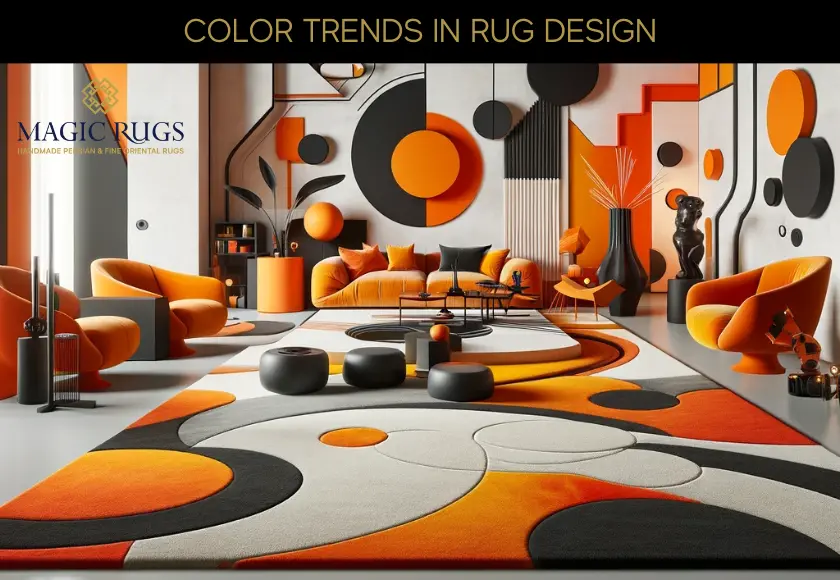
Current Trends in Rug Colors
Color trends in rug design often mirror the larger trends in the world of interior design and fashion. Currently, there's a noticeable shift towards embracing both bold and earthy tones, with a particular interest in:
- Biophilic Colors: Shades that reflect nature, such as moss green, ocean blue, and earthy browns, are increasingly popular. These colors are inspired by the biophilic design trend, which emphasizes a human connection to nature.
- Vintage-inspired Hues: Muted tones that evoke a sense of history and nostalgia, like burnt orange, mustard yellow, and dusty rose, are seeing a resurgence, bringing with them a touch of retro charm.
- Bold Monochromatics: Strong, single-color statement rugs, particularly in shades of blue, green, or even black, are trending as focal points in minimalist decor.
- Neutral Palettes: On the opposite end, there's a sustained preference for neutral tones such as grey, beige, and off-white, which serve as a versatile foundation for various design styles.
How to Incorporate Trendy Colors While Staying True to Your Personality
Incorporating the latest color trends into your home can be exciting, but it's important to ensure they align with your personal style and the atmosphere you wish to create. Here's how you can achieve that balance:
- Start with Accents: Introduce trendy colors through smaller, accent rugs before committing to larger pieces. This allows you to test out a color's compatibility with your space and preferences.
- Blend with Classics: Combine trendy colors with classic designs or patterns to create a rug that feels both current and timeless.
- Consider Room Use: Think about the mood you want in each room. A trendy color might be perfect for an energizing office space but less so for a calming bedroom.
- Personalize with Accessories: Pair a trendy rug with personal items and accessories that reflect your style, which can help the space feel more ‘you’.
- Temporary Over Permanent: If you're unsure about a color trend, opt for a less expensive or smaller rug that you can swap out easily as trends evolve.
- Sample Swatches: Use color swatches to see how a trendy color works with your existing decor. This can help you visualize the rug in your home without the commitment.
By thoughtfully considering these factors, you can enjoy the latest in rug color trends while creating a home environment that is both stylish and uniquely suited to your personal taste.
Creating Harmony and Balance
Using Color Theory to Create Cohesive Spaces
Color theory is an essential tool in designing a space that feels harmonious and balanced. It's based on the color wheel, which guides the blending and contrasting of colors to create aesthetically pleasing combinations.
- Complementary Colors: These are colors opposite each other on the color wheel, such as blue and orange or red and green. A rug in a complementary color can create a vibrant look without overwhelming, especially when one color is used as the dominant hue and the other for accents.
- Analogous Colors: These colors are next to each other on the color wheel, like blue, green, and purple. A rug in these hues can unify a space with a gentle and serene transition of color.
- Triadic Colors: A triadic color scheme involves colors that are evenly spaced around the color wheel. For example, a rug with elements of blue, yellow, and red can add a lively yet balanced palette to a room.
Understanding these principles can help in selecting rug colors that not only stand out but also work in harmony with the rest of the room’s decor.
Mixing and Matching Rug Colors for Aesthetic Appeal
The art of mixing and matching rug colors can add depth and character to your space:
- Layering Rugs: Combining rugs of different colors and textures can add depth and interest to a room. For example, layering a smaller, brightly colored rug over a larger, neutral one can make a statement.
- Accent Colors: Use your rug to introduce or tie together accent colors in your room. A multicolored rug can pull together various hues present in the room’s decor, creating a cohesive look.
- Monochromatic Schemes: Using varying shades of the same color can add sophistication and elegance. A rug that’s a shade darker or lighter than the walls can subtly enhance the space.
- Texture and Pattern: Sometimes, it’s not just the color but the texture and pattern that create harmony. A textured jute rug in a subtle hue can complement a room with busy patterns or bold colors.
- Test Before You Invest: If possible, try out rug samples in your space to see how the colors interact with your existing decor. Observe them at different times of day to see how changing light affects their appearance.
By considering these elements, you can create a space that not only looks coordinated and stylish but also feels right for you and your home.
Conclusion
Summary of Key Insights
Throughout this exploration of the psychology of colors in rugs, we've uncovered the profound impact that color choices can have on the look and feel of our homes, as well as what these preferences reveal about our personalities. Here are the key insights to take away:
- Color and Emotion: Colors have a remarkable ability to influence our emotions and behaviors, shaping the atmosphere of a room and our experiences within it.
- Personality Reflection: The colors we gravitate towards in our rugs can mirror our personalities, showcasing traits such as dynamism, tranquility, creativity, or warmth.
- Trend Integration: While staying current with color trends can refresh our spaces, it’s important to blend them with our personal style to create spaces that truly feel like home.
- Harmony and Balance: Using color theory principles can guide us in creating cohesive spaces that are visually appealing and evoke the right mood.
Encouraging Personal Expression Through Rug Colors
In essence, the colors of our rugs are more than just a design choice—they're a form of personal expression. They have the power to transform a space not only visually but also emotionally, making our homes a reflection of ourselves. As we wrap up this colorful journey, let's remember:
- Be Bold, Be You: Don't be afraid to choose rug colors that resonate with you. Your home is your canvas; express yourself freely.
- Test and Try: Experiment with different hues, textures, and patterns to find what truly speaks to you. It's okay to start small with accents and work your way up as you find your color confidence.
- Balance Trends with Timelessness: While it’s great to incorporate trendy colors, strive for a balance that ensures your space won’t feel outdated as trends change.
- Create Your Sanctuary: Ultimately, the goal is to create a space that brings you comfort, joy, and peace. Let your rug colors contribute to making your home your sanctuary.
Rug colors are a powerful tool in the alchemy of interior design. By choosing the right hues for your space, you not only craft a beautiful and cohesive home but also weave your own story into the very fabric of your daily life. Click Here to see our Rugs Collection .
Explore more trending collections!
Share:


